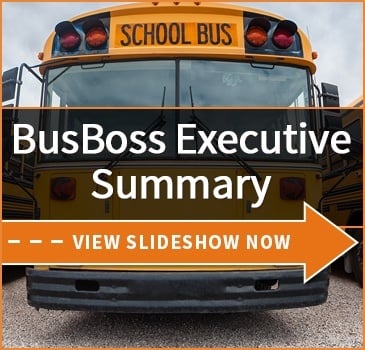Low-income Areas Need Electric School Buses the Most
published on October 18, 2024 by Sonia Mastros
transportation management services, school bus tracking software, route efficiency, vehicle tracking software

The push to see greater adoption of electric school buses (ESBs) proceeds, slowly but surely. That's according to a recent report from the World Resources Institute, tracking adoption of electric buses across the United States and its territories.
As of June 2024, there are more than 12,000 ESBs either on the road, or with a purchase commitment to deliver them soon. Every state in the US, except Wyoming, currently has some ESBs on the road. This adds up to around 200,000 students currently riding on electric buses, with more joining them every year.
Why does this matter? And who is benefiting most from this push for electric school buses? Let's take a look.
The Need For Electric School Buses
The argument for ESBs directly parallels arguments for electric vehicle (EV) adoption in general. EVs are far better for the environment, producing far less harmful pollutants than alternatives running on fossil fuels. Further, while they cost more upfront, the ongoing costs of operating EVs are cheaper across the board. EVs cost less in terms of fuel costs, and they're also cheaper to repair and maintain as well.
This, by itself, makes a strong argument for the adoption of electric school buses.
However, there are even more factors to consider in the case of ESBs. Students riding on older diesel buses are being exposed to high levels of auto exhaust, which is well-known to be dangerous. In fact, high levels of exhaust exposure have even been linked to reduced academic performance. This controlled 2019 study looking at an ESB rollout in Georgia provided hard evidence that riding electric buses actually improved students' test scores!
It's odd to think that your choice of school bus might directly influence test scores, but the science backs it up.
This raises the question: are ESBs being adopted in areas that need them the most? So far, the answer actually seems to be yes!
The Importance of ESBs in Low-Income Areas
One major challenge whenever it comes to the adoption of new technology in schools is ensuring that it isn't only used by 'rich' districts. Often, it's low-income districts who need new tech the most, and this is a clear example.
In the US, unfortunately, low-income areas also tend to see the highest levels of pollution. According to the EPA:
Residents of low-income neighborhoods and communities may be more vulnerable to air pollution because of proximity to air pollution sources such as factories, major roadways and ports with diesel truck operations.
Students in low-income areas are also more likely to ride the bus than those in more prosperous districts, at a rate of 60% vs 45%. In other words, they are being exposed to more pollution in their daily lives and on the bus, if their school district is still running on diesel. These students need electric buses for their safety, and for their academic success.
The good news is, this seems to be the case. The World Resources Institute found that 2/3 of committed ESB purchases were occurring in low-income districts. This is mostly thanks to incentive programs, such as awards from the EPA and tax credits from the IRS. Many states have incentive programs of their own, all aimed at putting electric school buses in low-income districts.
All in all, this is good news. ESB adoption is increasing, and the buses are going to places that need them.
BusBoss supports alternative energy school bus solutions, as well as helping our client districts optimize their current bus systems. To learn more about how we can help your district save money, while making your buses safer, just contact us.
School Bus Tracking Benefits Everyone
Tracking is good for districts, it’s good for students, and it’s good for parents. That makes it a real win-win investment for districts. What arguments do you find compelling, when talking about bus tracking?




